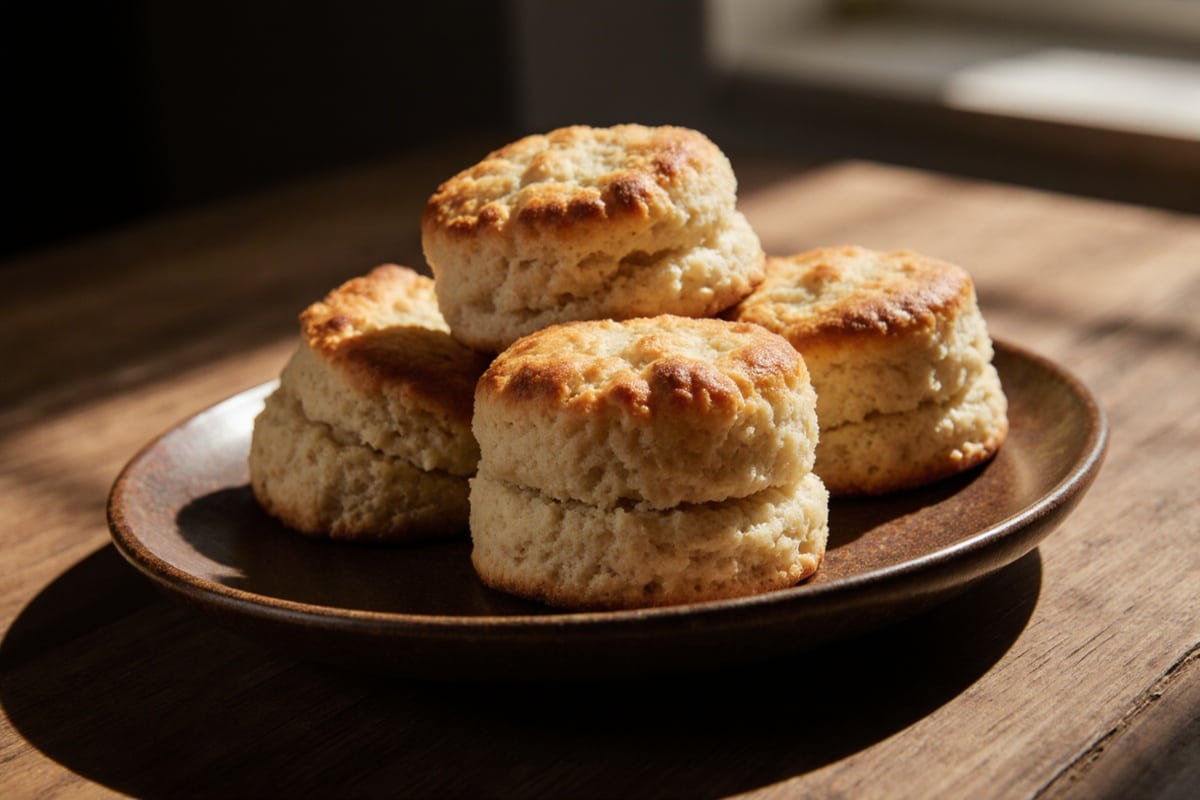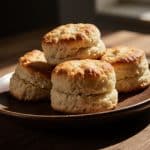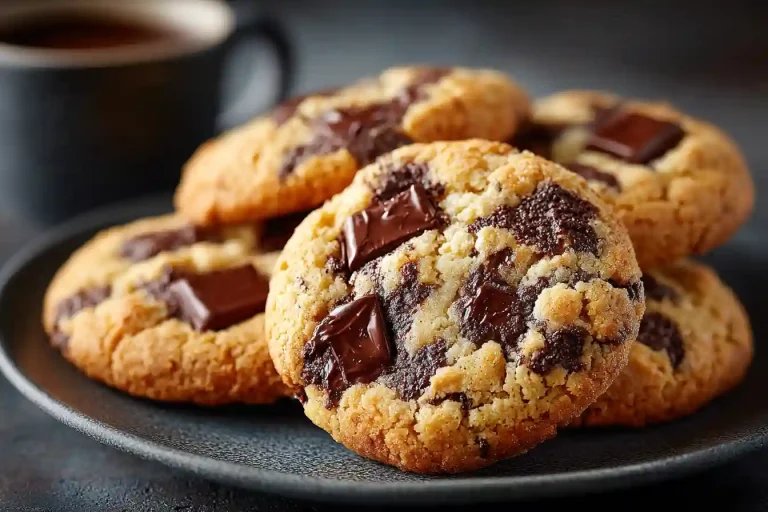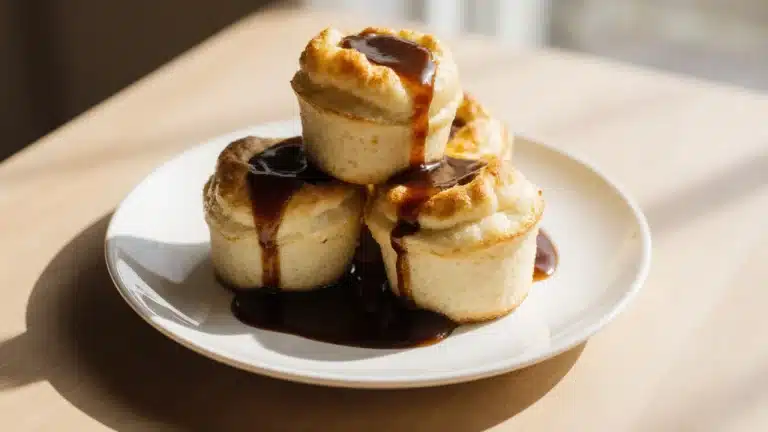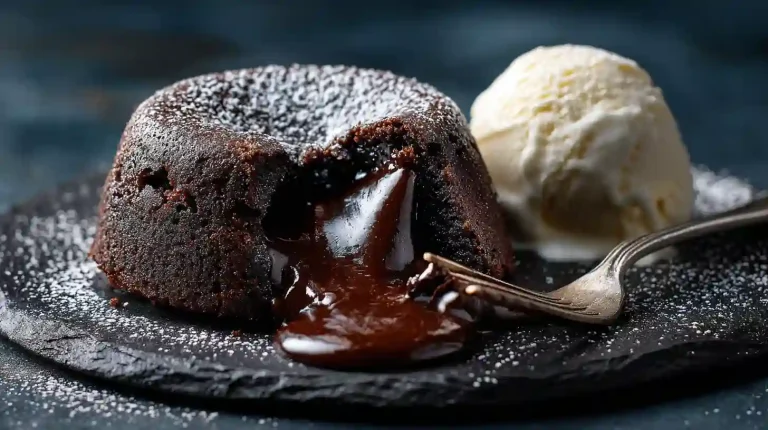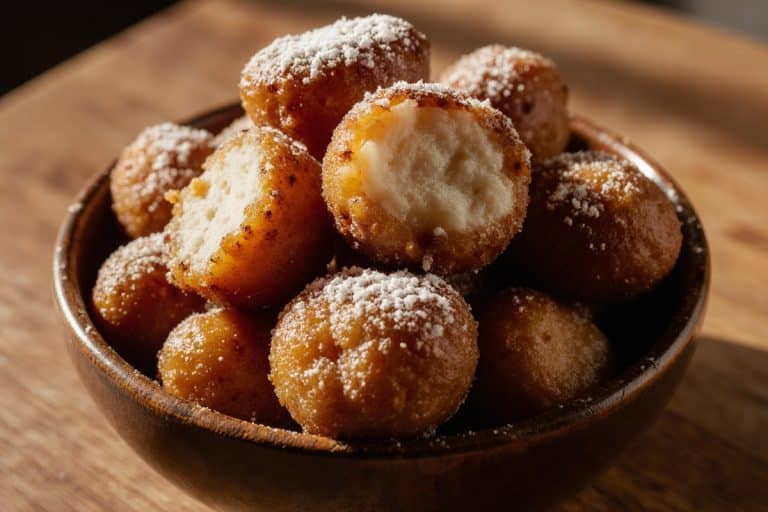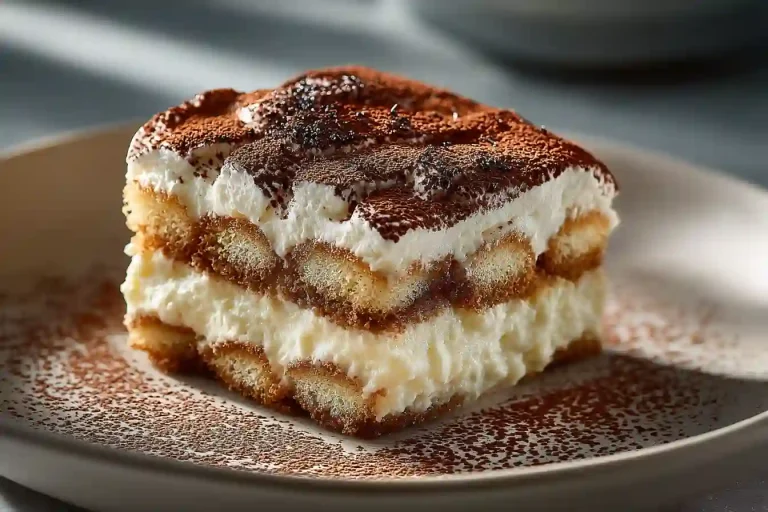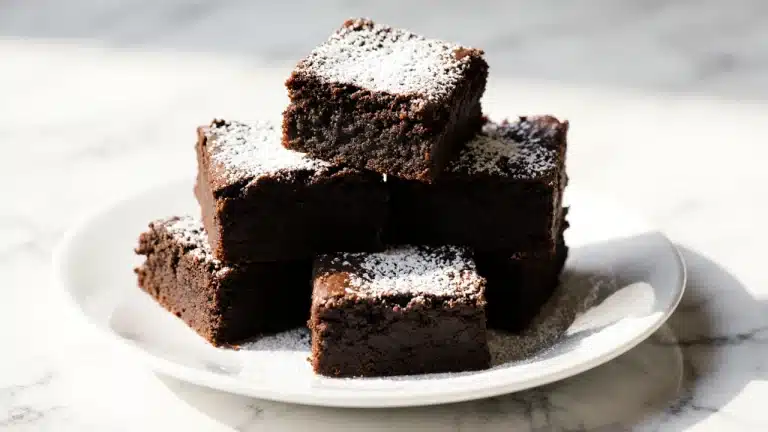Gordon Ramsay’s 5 Secret Tricks for Perfectly Fluffy Biscuits
Listen up, biscuit warriors. Gordon Ramsay biscuits aren’t just bread—they’re a culinary revolution sitting on your breakfast plate. I’ve burned more biscuits than most people have ever baked, but Ramsay taught me something critical: precision isn’t just for fancy restaurants, it’s for every kitchen. These aren’t your grandmother’s bland, hockey-puck biscuits. We’re talking about layered, cloud-like pillows of buttery perfection that will make your taste buds stand at attention. Whether you’re a kitchen rookie or a seasoned home cook, these techniques will transform your baking from “meh” to “mind-blowing.” The best part? You don’t need a culinary degree—just ice-cold butter, buttermilk, and the willingness to follow a few game-changing steps.
Gordon Ramsay’s Legendary Buttermilk Biscuits
Ingredients
Equipment
Method
- Preheat your oven to 220°C (425°F) or 230°C (450°F) for optimal rise.
- In a mixing bowl, whisk together the flour, baking powder, and salt.
- Cut the cold butter into the flour until it resembles coarse breadcrumbs.
- Gently add in the buttermilk, folding the mixture 3-4 times; be careful not to overmix.
- Roll the dough to about 3.8 cm (1.5 inches) thick and cut using a biscuit cutter without twisting.
- Brush the tops with buttermilk or melted butter.
- Bake for about 15–20 minutes until golden brown.
Nutrition
Notes
Love this recipe?
Give us 5 stars and comment!
Gordon Ramsay’s Legendary Buttermilk Biscuits: A Culinary Masterclass
What Makes Ramsay’s Biscuit Technique Unique
Gordon Ramsay’s biscuit method is more than just cooking—it’s about getting your breakfast just right. The secret weapon? Ice-cold butter and buttermilk. These ingredients help turn ordinary flour into light, flaky biscuits. Ramsay’s approach focuses on minimal handling and smart layering, resulting in biscuits that practically float off the plate.
Essential Ingredients for Perfect Biscuits
Let’s keep it simple. Ramsay’s biscuits require just a few ingredients: all-purpose flour, baking powder, salt, and—most importantly—ice-cold unsalted butter cut into perfect cubes. Buttermilk adds a tasty touch and great texture. Remember, keeping everything cold is key because warm butter ruins those flaky layers.
Keyword-Rich Baking Technique
When it comes to baking, the right temperature matters. For Gordon Ramsay buttermilk biscuits, you’re looking at 425–450°F. Cut the butter into the flour until it looks like coarse, buttery crumbs. Gently mix in the buttermilk—overmixing can squash your biscuit dreams. Fold the mixture 3-4 times, roll it out to about 1.5 inches thick, and cut straight down with your biscuit cutter. No twisting, please.
Nutrition and Health: Understanding Your Biscuit
Nutritional Breakdown
Each biscuit comes in at around 210–240 calories, along with 11–13g of fat and 4–5g of protein. They’re not meant for everyday dieting, but they sure are a tasty treat on occasion. Buttermilk adds calcium, while enriched flour supplies B vitamins. Moderation is key.
Dietary Considerations
If you’re gluten-intolerant, be cautious. Traditional Ramsay biscuits aren’t suitable for gluten-free or dairy-free diets. However, creative cooks can make adjustments with alternative flours and milk substitutes. Always double-check your ingredients.
Baking Method Impact
Baking at high temperatures (425–450°F) is more than just a technique—it’s essential for successful biscuits. This method helps achieve the perfect rise, creates those delicious flaky layers, and results in a lovely golden-brown exterior that says “professional baker.”
Step-by-Step Gordon Ramsay Biscuit Recipe
Ingredient Lineup
Gather what you need: all-purpose flour, baking powder, salt, optional sugar, ice-cold unsalted butter, and tangy buttermilk. Temperature matters more than you think. Make sure everything stays cold right up until mixing.
Equipment Essentials
You’ll need an oven, a parchment-lined baking sheet or cast-iron skillet, mixing bowls, a sturdy biscuit cutter, and a rolling pin. Good tools lead to great results.
Foolproof Technique
First, preheat your oven. Next, whisk together the dry ingredients. Cut the cold butter into the flour until it resembles coarse crumbs. Then, gently fold in the buttermilk—no kneading! Roll it out to about 1.5 inches, cut it without twisting, and brush the tops with buttermilk or melted butter. Bake for 15–20 minutes until they’re golden.
Creative Biscuit Variations
Flavor Transformations
Looking to jazz up your biscuits? Mix in sharp cheddar, crispy bacon bits, or fresh herbs like chives and rosemary. Each addition can create a new flavor experience, all while sticking to Ramsay’s basic technique.
Gourmet Glazes
Take your biscuits to the next level with a honey butter glaze or some spicy hot honey. Ramsay enjoys the balance of sweet and savory—and I think you will too.
Regional Inspiration
Explore flavors from around the globe: Southern US buttermilk biscuits, British cream-based scones, or spicy cheddar jalapeño creations. Biscuits are like a blank canvas for creativity.
Avoiding Biscuit Disasters
Common Pitfalls
Too much dough handling makes hockey pucks instead of biscuits. Warm butter will ruin the flakiness. Low oven temperatures can kill the rise. Think of your dough as a delicate pastry, not bread.
Professional Fixes
Cold is crucial. Keep your butter very cold. Handle the dough as little as possible. Press your biscuit cutter straight down—no twisting! Preheat your oven properly. These straightforward steps can really set you apart from the amateurs.
Ramsay’s Baking Philosophy
Technique Over Drama
“Sharp heat, light touch” isn’t just a catchy phrase—it’s Ramsay’s philosophy in baking. Getting the technique right is what matters most.
The Science of Layering
It’s not about brute force. Perfect biscuits come from gentle, strategic folding. Each careful motion creates those airy, pull-apart layers that make a true Ramsay-style biscuit.
If you’re eager to learn more about biscuits, this link might have what you’re looking for!
Video tutorial: Biscuits
FAQ – gordon ramsay biscuits
Question: How cold does my butter really need to be?
Answer: Borderline frozen. If it’s starting to soften, you’ve already lost the battle. Stick it in the freezer for 10-15 minutes before baking.
Question: Can I substitute buttermilk?
Answer: Not ideally. Buttermilk is the secret weapon. If you must, mix milk with a tablespoon of vinegar and let it sit for 5 minutes.
Question: What’s the biggest biscuit-making mistake?
Answer: Overworking the dough. Touch it like it’s made of delicate glass—minimal handling is your mantra.
Question: How do I know when biscuits are perfectly baked?
Answer: Golden brown edges, risen center, and they should look like they’re about to float off the baking sheet.
Conclusion
When you pull those first golden biscuits out of the oven, you’ll understand why cooking isn’t just about feeding people—it’s about creating moments. The first tear into a steaming, flaky biscuit is pure magic: butter melting, layers separating, steam rising. This isn’t just a recipe; it’s your ticket to breakfast domination. Every imperfect attempt gets you closer to that restaurant-quality result. Ramsay didn’t become a legend by playing it safe, and neither will you. Trust the technique, respect the ingredients, and most importantly—enjoy the journey. Now grab that baking sheet and show those biscuits who’s boss.

